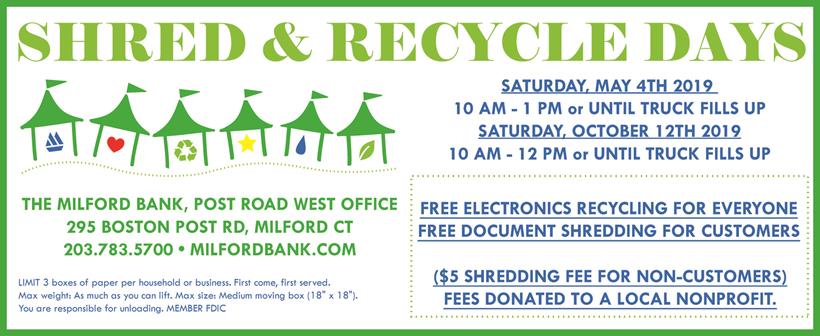Don’t Forget Bulk Pickup to Help Get Rid of Clutter around Your Home
By Pam Reiss
Every year, we all collect all kinds of junk in our homes, including broken items, things we no longer need or use, older items that have been replaced, and more. They are all taking up space, creating clutter, and keeping our homes from being as neat as we might like them to be. You probably have things you have forgotten about and haven’t even seen in years.
Whether it’s your living space, basement, attic, garage, shed – or all of them – you’ll be surprised at how much space junk takes up. This is a great time of year to work on getting rid of some of the clutter around your home to make it all more manageable.
That’s particularly true if your city does bulk waste pickup, as many do this time of year – Milford is starting its bulk pickup on June 1 (see start dates below). It makes it much easier to get rid of some of your larger junk, instead of having to lug it to the dump or letting it continue to take up space around your home.
The first step is to create a plan. Take a look at where you want to clean up and take inventory of any larger items you want to get rid of. Once you remove larger things, you have a lot more space to work with as you clean. Then, it’s a good idea to work on one space at a time, but if you’re up against a bulk pickup deadline, though, you may want to start by going through each space to take out those items and then go back for the smaller items and organization.
It’s a good idea to create four staging areas for the rest:
- Garbage/recycling – Anything you are getting rid of goes in this pile. Keep a pile for bulk pickup, and put regular garbage directly into a large garbage bag.
- Donate/sell – You may have clothes, books, toys, household items that you’ve outgrown or simply don’t use anymore. If they’re in good condition, consider donating them – there are plenty of people in need, and you may be able to take a tax deduction on your donations (consult your tax advisor for specifics). You can also sell them online through local social media tag sale pages or, if you have a lot, and have the motivation, you can hold a yard sale. Check with your neighbors to see if they want to have a combined sale. You may be able to de-clutter your home and make a few dollars in the process to add to your emergency fund.
- Keepers – Inevitably, you’re not going to want to get rid of everything you haven’t used in a while. There may be things with sentimental value, things you’re saving for your grandkids, and some items with specific uses that you want to keep. Put those in s separate area and make a logical plan for storing them, including labeling storage bins and boxes to make them easy to find when you need them.
- Out of place – One of the biggest signs of clutter is things being out of place. Sometimes, it’s out of pure laziness, but often, it’s because putting things back where they belong is difficult, because of the clutter. Put these things into their own pile, so you can put them in their proper places – or even better, put them away immediately. In the future, make a point of putting things back where they belong when you’re done using them.
You should check your local bulk waste guidelines for any additional requirements and prohibited items. Things like old paint, propane tanks, grass clippings and many other items have other disposal specifications. If you have larger items, you may need to cut them into smaller pieces, or take them to the dump yourself.
Milford’s bulk waste pickup start dates are based on your normal garbage pickup day:
- Monday garbage – Bulk pickup starts on Monday, June 1
- Tuesday garbage – Bulk pickup starts on Monday, June 8
- Thursday garbage – Bulk pickup starts on Monday, June 15
- Friday garbage – Bulk pickup starts on Monday, June 22
Once you’ve gotten rid of some of the clutter around your home, you’ll be in a better place to make use of the things you own. It’s also very easy to re-clutter areas you have cleaned. Keep in mind how much nicer things look when they aren’t cluttered – and how much effort it took to clean and re-organize. Hopefully, that will help you keep things neater. Keeping things tidy and in good order is also helpful for managing your budgets. Now that you know what you have and where you’ve stored them, you will be less likely to buy duplicate items.



